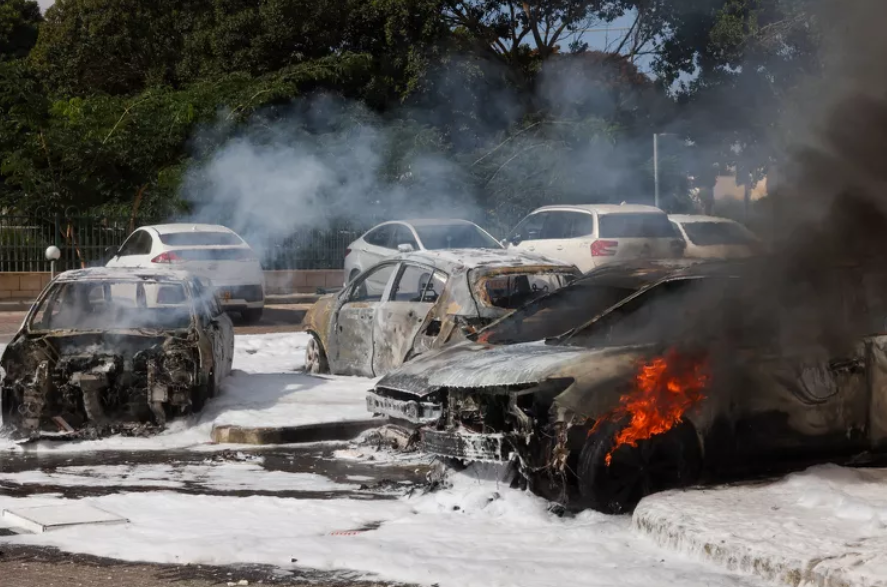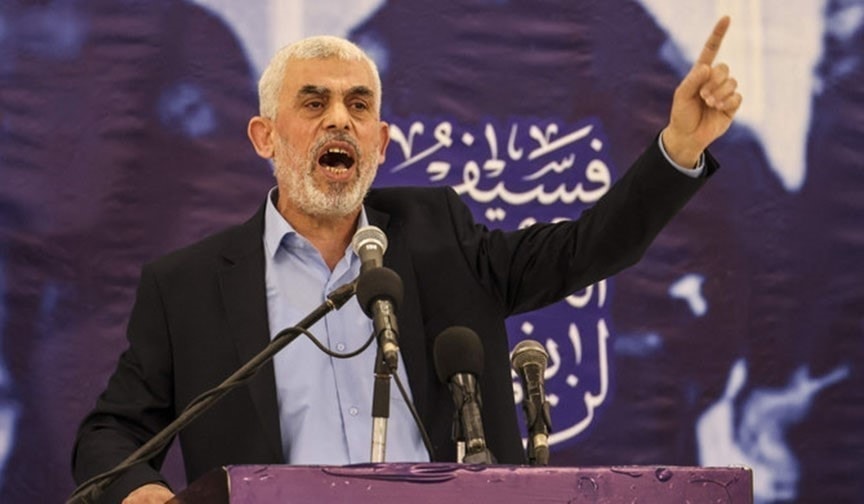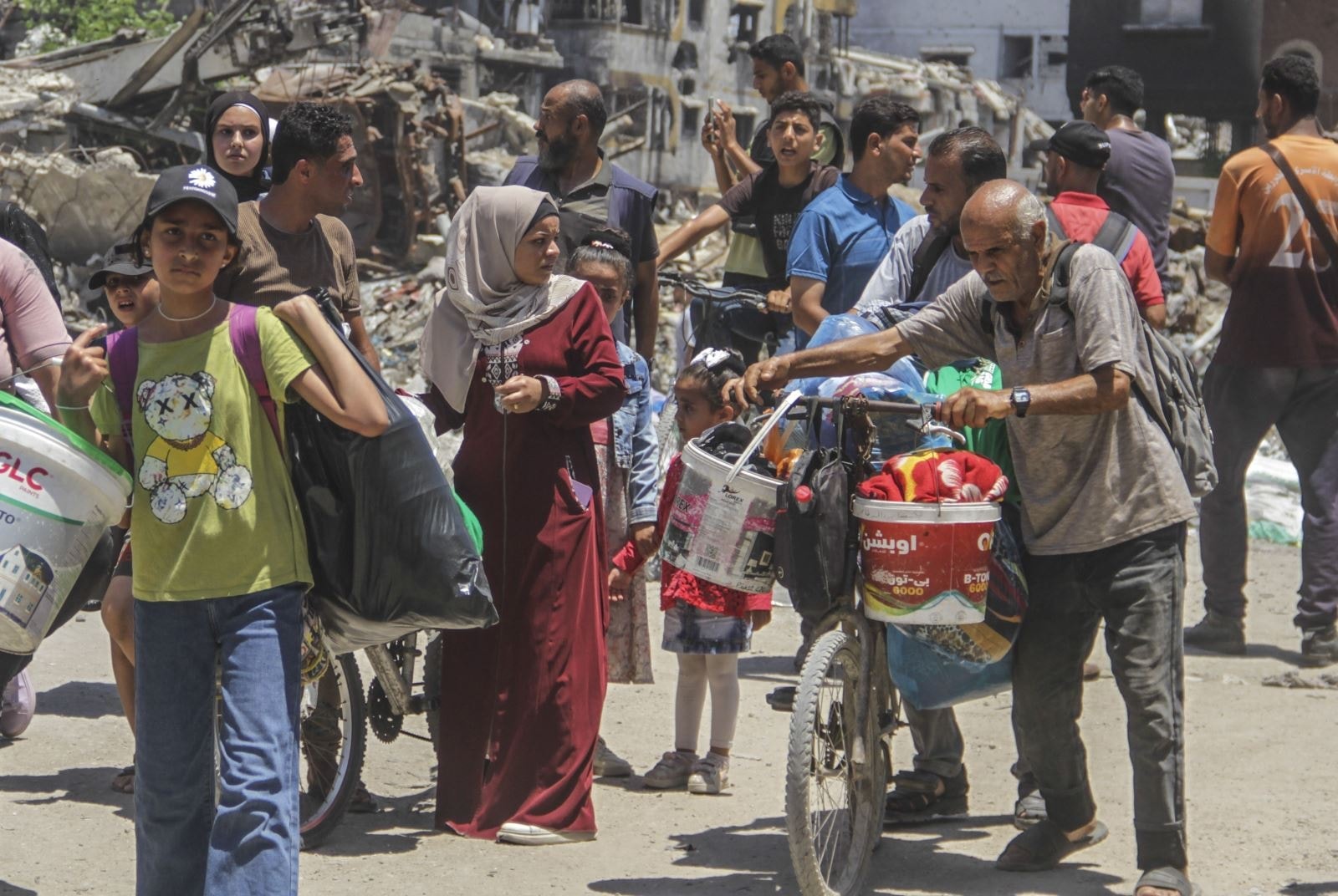Minutes of a series of meetings of Hamas leaders have just emerged, revealing previously unknown details about the group's plans to attack Israel.

According to The Times of Israel on October 13, the devastating attack carried out by Hamas in southern Israel on October 7, 2023 was originally planned to be carried out the previous year, but was delayed because Hamas wanted support from Iran and Hezbollah.
According to information published by the international press on October 12, the above information appeared in a series of meetings of Hamas military and political leaders over the course of two years, where they planned the logistical issues of the attack, as well as letters between Hamas leader Yahya Sinwar and Iranian officials.
An initial report by The New York Times detailed the minutes of 10 meetings between January 2022 and August 2023. The paper said the documents were discovered in January on a computer at a Hamas command center in Khan Younis. The New York Times verified the authenticity of the documents and also obtained an internal report from the Israel Defense Forces (IDF) confirming the same.
The content of the meetings and messages focused primarily on Iran's involvement in planning and financing the attack.
While it is not always clear which officials attended which meetings, The New York Times found that Hamas leader Yahya Sinwar was present at all of them, while other senior officials such as Muhammed Deif and Marwan Issa (who has since died) attended at least some. Yahya’s brother Muhammad Sinwar was also present.
The plan for cross-border attacks on Israeli military infrastructure and civilian communities was first mentioned in a meeting in January 2022, when Hamas officials in attendance discussed avoiding escalating the conflict with Israel and instead focusing on the “big project.”
However, according to The Washington Post, that process could have begun earlier, based on letters sent by Mr. Sinwar to Iranian officials in which he offered financial and military support for a large-scale attack on Israel.

“We promise you that we will not waste a minute or a penny unless we work towards achieving this sacred goal,” Mr. Sinwar wrote in a letter dated June 2021.
Mr. Sinwar’s request appears to have been granted, as The Wall Street Journal said it had obtained a letter in which an Iranian official confirmed the $10 million in funding to Hamas’s armed wing. Mr. Sinwar then requested an additional $500 million, which he said could be disbursed over two years, with $20 million transferred each month.
Following the January 2022 meeting, the “grand project” was discussed in detail at subsequent Hamas leadership meetings in Gaza in April and June of the same year.
During that time, plans for an attack began to take shape. Last November, The Washington Post reported that a 36-page document was discovered in northern Gaza that outlined and considered multiple attack scenarios for Israel.
The newspaper said that the targets discussed by Hamas included shopping malls and military command centers, as well as the Azrieli Tower in Tel Aviv, which houses offices, a large shopping mall and a train station. In this scenario, the terrorist group planned to carry out an attack similar to the attacks on the World Trade Center in New York on September 11, 2001. However, the plan was scrapped after Hamas concluded that it lacked the capabilities to bring down the towers.

Another plan that was scrapped was to use horse-drawn carts, which Hamas said would be fast and light enough to transport fighters without attracting attention like modern vehicles.
By the time Rosh Hashanah arrived nine months later, in September 2022, Hamas appeared ready to strike. Hamas had decided to attack military bases before moving on to residential areas. But it would take another 13 months for Hamas to carry out its attack and massacre in southern Israel.
The reason for the delay was not explicitly mentioned in the minutes of the meeting, but there are indications that the delay was related to Hamas's appeal to Iran and Hezbollah in Lebanon for help.
According to minutes of an August 2023 meeting, Mr. Khalil Al-Hayya, Mr. Sinwar’s deputy, had traveled to Lebanon a month earlier and discussed the details of the attack with a senior member of Iran’s Islamic Revolutionary Guard Corps, Mr. Mohammed Said Izadi.
During the meeting, Mr. al-Hayya told Mr. Izadi that Hamas would need help in attacking Israeli targets in the first hour of the offensive, dubbed “Al-Aqsa Flood.”
Mr Izadi told Mr al-Hayya that both Iran and Hezbollah welcomed the plan, but stressed that they needed more time to prepare. It is unclear what Iran’s final response was.
Although Iran and Hezbollah appeared willing to participate, Hamas ultimately proceeded without direct assistance from Iran or Hezbollah. Hezbollah joined in the next day with a rocket attack, escalating the war on this front.
The New York Times cited several reasons why Hamas was willing to attack without allies. Hamas was concerned that Israel was about to deploy a new missile defense system. In addition, Hamas was worried that Israel and Saudi Arabia seemed to be moving closer to normalizing relations.
Hamas also told Hezbollah that it was forced to carry out a strategic battle due to Israel's internal situation, an apparent reference to last year's political turmoil over the Israeli government's judicial reform efforts.
From the start of planning until the day of execution, Hamas deliberately lulled Israel into a false sense of security by making it believe that Hamas was focused on managing Gaza rather than seeking conflict. This tactic worked, as Israel was caught by surprise and unprepared.
At a Hamas meeting in April 2022, participants expressed relief that the Muslim holy month of Ramadan had passed without incident, allowing the group to disguise its grand plan. A similar sentiment was expressed at subsequent meetings, including in June 2022 and again at the end of Ramadan the following year.
Not wanting to expose any risk, Hamas officials decided that only those who needed to know would be informed of their intentions. As a result, the Hamas leadership in Qatar was largely kept in the dark, with only political leader Ismail Haniyeh being informed of the secret meetings with Iranian and Hezbollah officials.
In Gaza, a similar decision was made regarding the group’s lower-level fighters. Minutes of a June 2022 meeting revealed that Mr. Sinwar decided that the fighters would only be fully aware of the attack plan hours before it was carried out.
By the fall of 2023, after nearly two years of deceiving Israel, Hamas is once again poised to strike. There is only one major point of contention: whether to strike on Yom Kippur, which falls on September 25, or wait until Simhat Torah, on October 7.

Finally, on the morning of October 7, Hamas launched its deadly attack. Some 1,200 people were massacred in dozens of communities in southern Israel that day, and 251 were taken hostage. Of those, 97 remain in Gaza.
The Hamas-run Gaza Health Authority said more than 42,000 people were killed or feared dead in the ensuing war in the strip.
Israel claims to have killed some 17,000 militants in the fighting up to August and another 1,000 inside Israel on and after October 7.